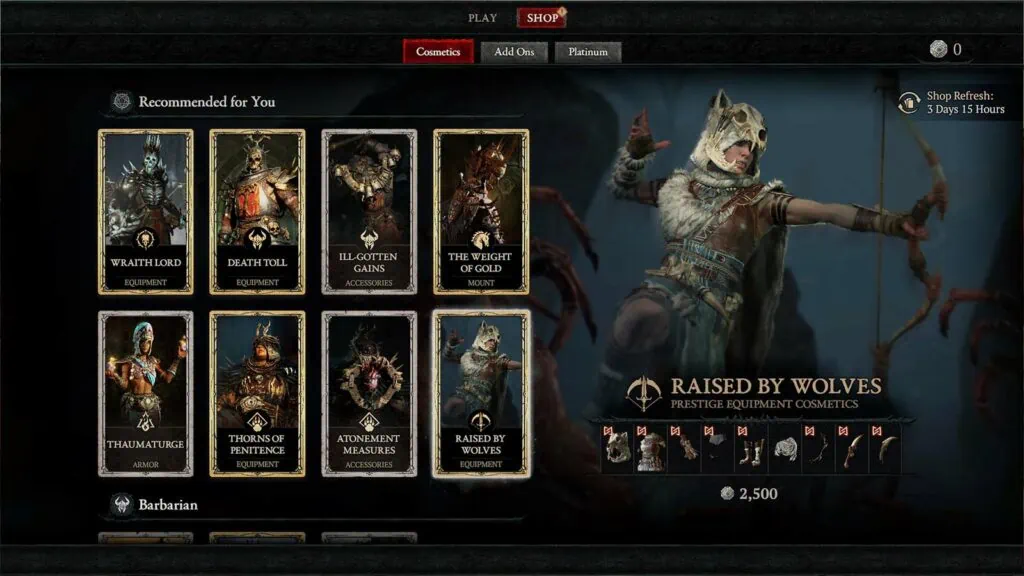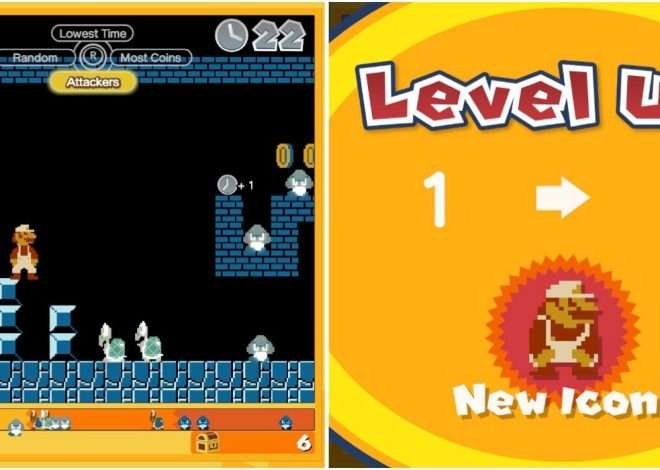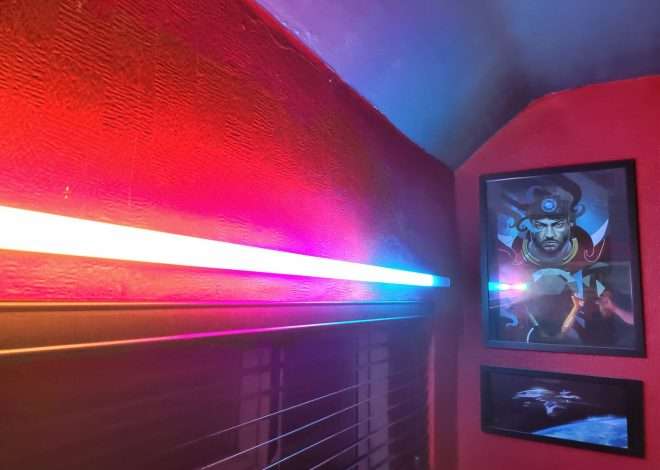
Diablo 4 and Cosmetic Microtransactions: A Detailed Overview
The highly anticipated Diablo 4 is on the horizon‚ promising a return to the series’ darker roots while introducing new gameplay mechanics and a vast‚ interconnected world. One of the most debated aspects surrounding the game’s development has been its monetization strategy. Recently‚ Diablo 4’s lead designer confirmed that the game will indeed feature cosmetic microtransactions‚ a decision that has sparked both excitement and concern within the Diablo community. Understanding the nuances of this approach‚ its implications for gameplay balance‚ and the overall player experience is crucial for appreciating the future of Sanctuary. Let’s delve into the details of these microtransactions and explore what they mean for the legions of Diablo fans eager to return to the eternal conflict.
Understanding Cosmetic Microtransactions in Diablo 4
Cosmetic microtransactions are in-game purchases that allow players to customize the appearance of their characters and equipment without affecting their gameplay stats or abilities. This approach is often contrasted with “pay-to-win” models‚ where spending money grants players a direct advantage over others.
What are Cosmetic Items?
Cosmetic items in Diablo 4 are expected to include:
- Armor Skins: Alter the visual appearance of armor pieces‚ allowing players to express their personal style.
- Weapon Transmogs: Change the look of weapons without affecting their damage or attributes.
- Mount Customization: Customize the appearance of mounts‚ such as horses‚ with different armor‚ saddles‚ and decorations.
- Character Accents: Add visual flair to characters‚ such as tattoos‚ hairstyles‚ and markings.
- Emotes: Express emotions and communicate with other players through animations.
Why Cosmetic-Only Microtransactions?
The decision to focus on cosmetic microtransactions is likely driven by a desire to generate revenue while avoiding the pitfalls of pay-to-win systems. By offering purely aesthetic items‚ the developers aim to provide players with options for personalization without disrupting the game’s balance or creating an unfair advantage.
The Rationale Behind Microtransactions: Funding Future Development
The modern gaming landscape increasingly relies on post-launch support and content updates. Microtransactions‚ when implemented thoughtfully‚ can provide a sustainable revenue stream for ongoing development. This can translate into:
- New Content: Funding the creation of new storylines‚ quests‚ and areas to explore.
- Gameplay Updates: Implementing balance adjustments‚ bug fixes‚ and new features based on player feedback.
- Seasonal Events: Creating limited-time events with unique rewards and challenges.
- Server Maintenance: Ensuring stable and reliable servers for a smooth online experience.
Maintaining a game like Diablo 4‚ with its vast world and persistent online elements‚ requires significant resources. Microtransactions can help ensure that the game receives the necessary support to thrive long after its initial release.
Potential Benefits and Concerns
The introduction of cosmetic microtransactions in Diablo 4 presents both potential benefits and concerns for the player base.
Potential Benefits
One of the primary benefits is the ability for players to express their individuality through character customization. The wide array of cosmetic options can enhance the overall role-playing experience and allow players to create unique and visually appealing characters. Furthermore‚ the revenue generated from these microtransactions can support the continued development of the game‚ leading to new content‚ features‚ and improvements.
Potential Concerns
A major concern is the potential for the game’s art style to be influenced by the desire to sell cosmetic items. There’s a risk that the developers might prioritize visually striking but thematically inappropriate items over those that fit the game’s dark and gritty aesthetic. Another concern is the perceived value of cosmetic items. Players might feel that the prices are too high or that the items are not worth the cost‚ especially if the quality or variety is lacking. Finally‚ there is always a risk of “feature creep‚” where the focus on cosmetic microtransactions overshadows other important aspects of the game‚ such as gameplay balance and content creation.
Avoiding Pay-to-Win: The Key to Player Satisfaction
The success of cosmetic microtransactions in Diablo 4 hinges on the developers’ ability to avoid pay-to-win mechanics. Players are generally accepting of cosmetic-only purchases‚ but they are quick to reject systems that grant unfair advantages to those who spend more money.
Maintaining Gameplay Balance
To ensure fair gameplay‚ it’s crucial that cosmetic items have absolutely no impact on character stats or abilities. The game should be designed so that skill and strategy are the primary determinants of success‚ not the amount of money spent on cosmetic enhancements. Furthermore‚ the developers should be transparent about their monetization strategy and actively solicit feedback from the community to address any concerns about pay-to-win elements.
Earning Cosmetics Through Gameplay
Another way to maintain player satisfaction is to offer alternative methods for acquiring cosmetic items through gameplay. For example‚ players could earn cosmetic rewards by completing challenging achievements‚ participating in seasonal events‚ or reaching certain milestones in the game. This provides a sense of progression and accomplishment‚ making cosmetic items feel more valuable and rewarding.
The Role of the In-Game Shop
The in-game shop will be the primary hub for purchasing cosmetic microtransactions. It’s important that the shop is designed in a way that is unobtrusive and doesn’t detract from the overall gameplay experience.
Shop Design and Accessibility
The shop should be easily accessible from the main menu but should not be intrusive or constantly push advertisements on players. The layout should be clear and intuitive‚ making it easy to browse and purchase items. Furthermore‚ the shop should provide detailed descriptions and previews of each cosmetic item‚ allowing players to make informed decisions about their purchases.
Pricing and Value
The pricing of cosmetic items is a delicate balancing act. The prices should be high enough to generate revenue but low enough to be perceived as fair and reasonable by players. The developers should also consider offering bundles or discounts to incentivize larger purchases. Ultimately‚ the value of a cosmetic item is subjective‚ but the developers should strive to provide a variety of options at different price points to cater to a wide range of players.
Community Expectations and Feedback
The Diablo community is passionate and vocal about their expectations for Diablo 4. The developers must actively engage with the community and listen to their feedback regarding the game’s monetization strategy.
Open Communication
Transparent communication is essential for building trust with the player base. The developers should regularly provide updates on the game’s development‚ including information about upcoming content‚ features‚ and balance changes. They should also be open to addressing player concerns and responding to feedback in a timely manner. This can be achieved through forums‚ social media‚ and in-game surveys.
Incorporating Feedback
The developers should actively incorporate player feedback into their decisions about the game’s monetization strategy. This could involve adjusting the pricing of cosmetic items‚ adding new ways to earn cosmetics through gameplay‚ or addressing concerns about pay-to-win elements. By listening to the community and responding to their needs‚ the developers can create a game that is both fun and fair for everyone.
The Future of Diablo 4 and Microtransactions
The success of Diablo 4 will depend on a variety of factors‚ including its gameplay mechanics‚ story‚ and overall player experience. However‚ the game’s monetization strategy will also play a significant role in its long-term success. By focusing on cosmetic-only microtransactions and avoiding pay-to-win elements‚ the developers can create a sustainable revenue stream that supports the continued development of the game without alienating players.
Long-Term Vision
The developers should have a clear long-term vision for Diablo 4 and its monetization strategy. This vision should prioritize player satisfaction and fair gameplay above short-term profits. By investing in the game’s long-term health and building a strong relationship with the community‚ the developers can ensure that Diablo 4 remains a popular and enjoyable game for years to come.
The implementation of cosmetic microtransactions in Diablo 4 presents a complex challenge‚ requiring careful consideration of player expectations‚ gameplay balance‚ and long-term sustainability. The key to success lies in transparency‚ communication‚ and a commitment to avoiding pay-to-win mechanics. Diablo 4 has the potential to be a truly exceptional game‚ but it will require a thoughtful and balanced approach to monetization. Ultimately‚ the future of Sanctuary depends on the decisions made by the developers and the feedback provided by the passionate Diablo community. Only time will tell if the delicate balance between revenue generation and player satisfaction can be achieved‚ ensuring the eternal conflict continues for generations to come. We can only hope the decisions made support the game and do not detract from the core experience.



